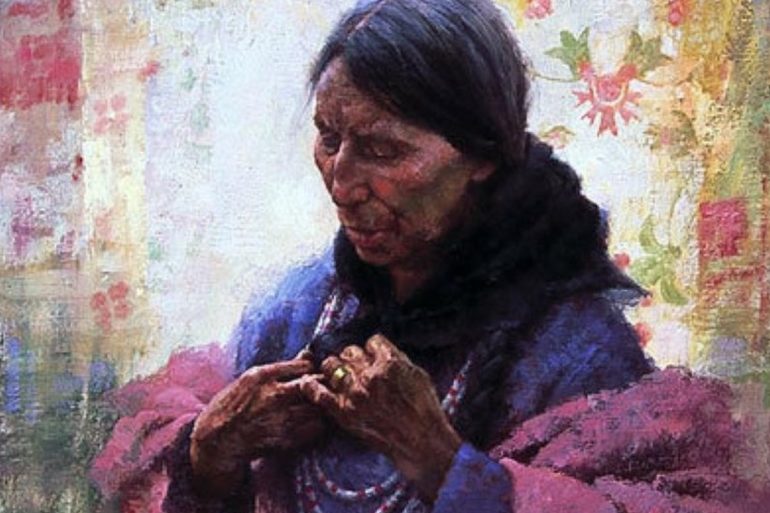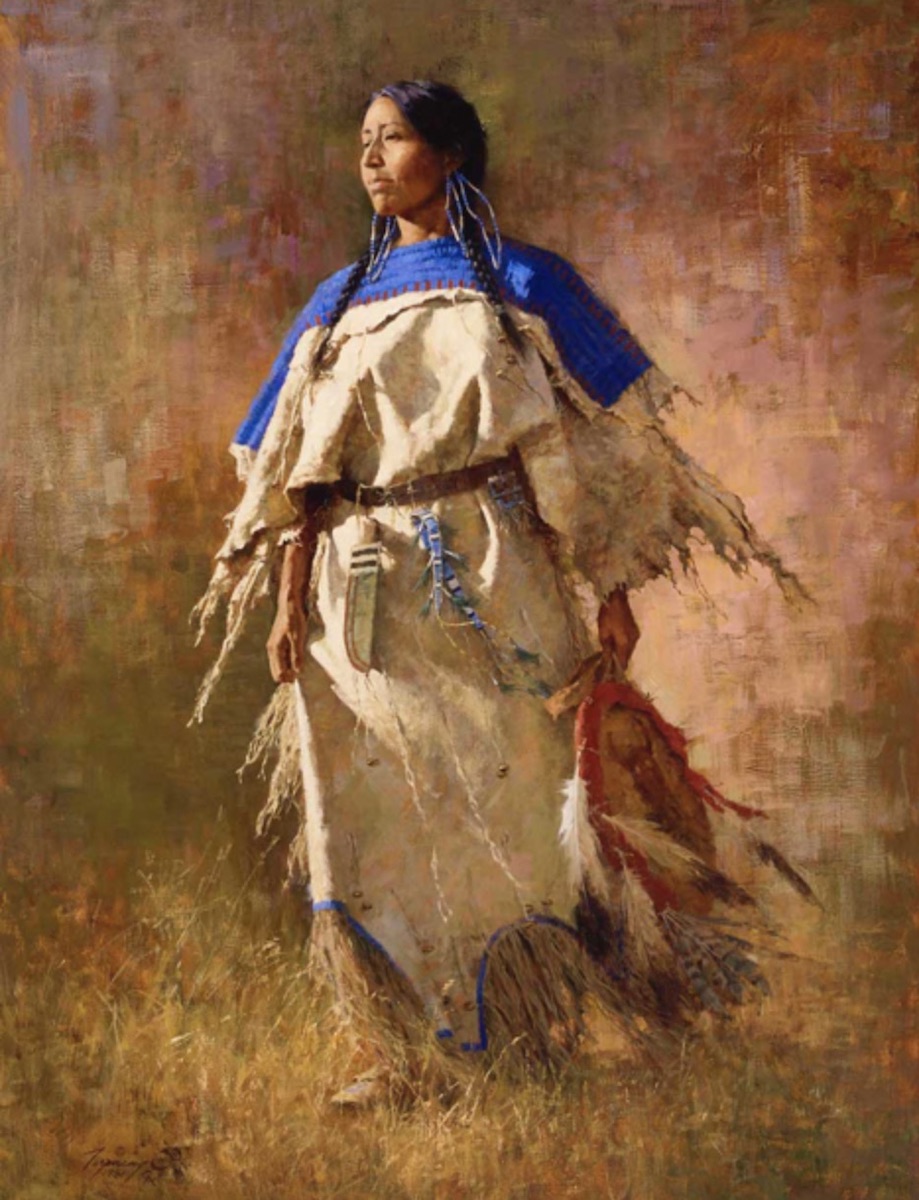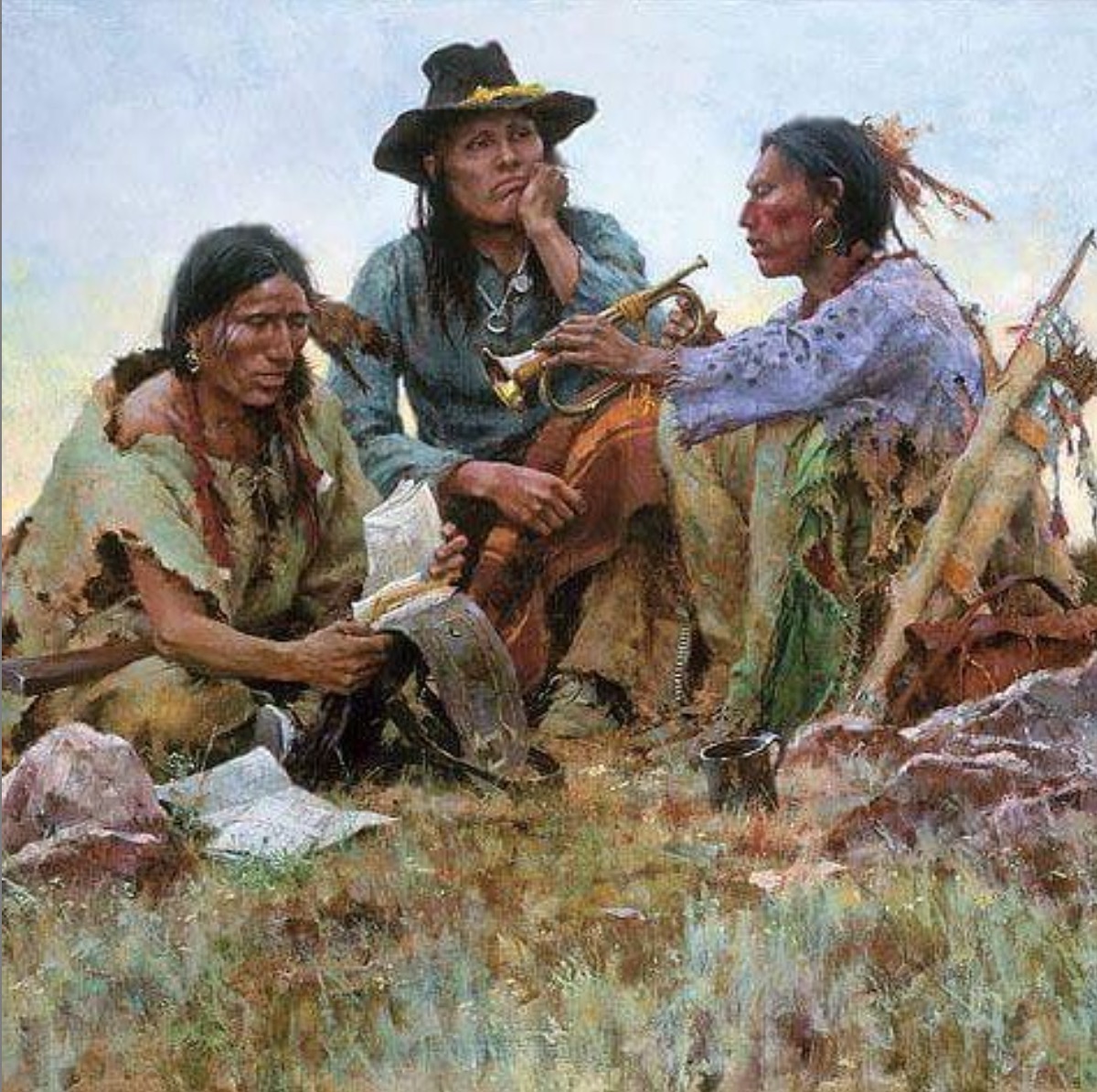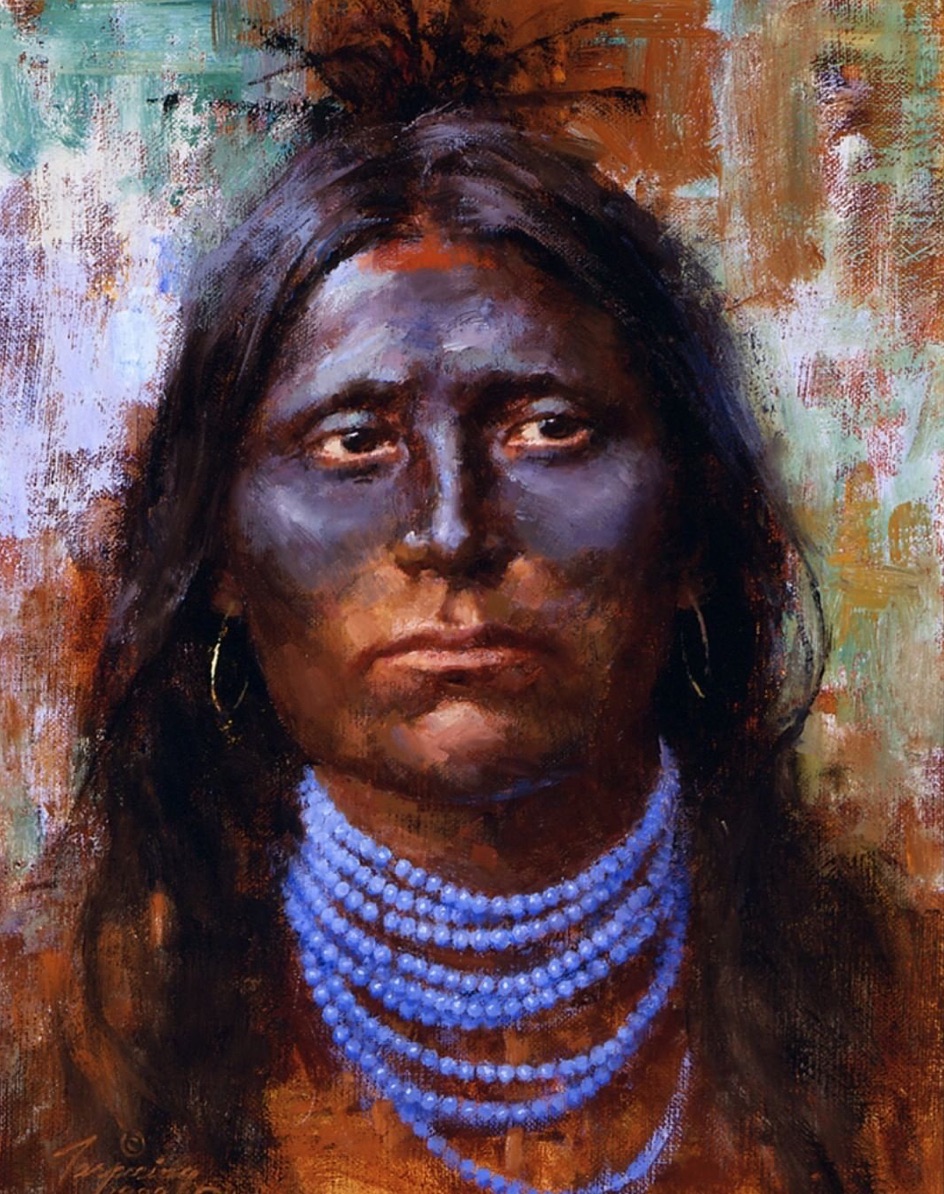
This post is also available in:


Among the great representatives of contemporary Western art, Howard Terpning, born in 1927, is undoubtedly one of the great American painters and illustrators. In his works he mainly represents the natives of America in scenes of everyday life and portraits. Like all great artists he has been drawing since childhood, at the age of 17 he served in the Marine Corps for two years, after which he enrolled at the Academy of Fine Arts and then at the American Academy of Art, both in Chicago, where he honed his skills in drawing and painting. For 25 years he worked as an illustrator for prestigious magazines and produced over 80 film posters (his are the posters of Lawrence of Arabia, Cleopatra and Gone with the Wind). Despite his name circulating in the world of illustration, in 1967, Terpning accepted the invitation offered to him by the Marine Corps to document the Vietnam War (living in the trenches with them) where he produced six of his paintings, preserved at the National Museum of the Marine Corps.

In 1974 he decided to abandon his career as an illustrator and devote himself to his interest in the West Indians. Recognition for his artistic realism was not long in coming: within two years he was elected best artist by both the National Academy of Western Art and the CAA (Cowboy Artist of America). In his 22 years as an American Western artist, he has received 42 well-deserved awards, including several editions of the prestigious Prix de West of The National Cowboy & Western Heritage Museum in Oklahoma City and the Centennial of Oklahoma Award in 2007. In 1985, the Gilcrease Museum paid tribute to him with a retrospective of 38 of his original works, some of which were also exhibited in Beijing and at the Grand Palais in Paris. The Director of the Gilcrease Museum at the time, Fred A. Myers, said about Terpning: “… he is simply the best and most famous artist of western characters… He is part of a very small group of late 20th century western painters whose art will still be appreciated and hung in museums in a hundred years’ time.” His works are exhibited in the most important American museums and are very quoted: in 2006 the work “Search for the Renegades” was sold for $1.4 million by Coeur d’Alene Art Auction.

In his work Terpning captures scenes of life and characters portrayed in their daily lives and the choice of his palette is deliberately limited to ensure that the narrative is the first impression the viewer receives. With his works he makes us participate in the culture, rituals and folklore of the natives of America, making us more aware of their living in harmony with nature and respecting ancestral life. Her attention can range from decorating the shield of a native Sioux delivered into the hands of his wife, who walks around the tribe proving that her husband is a true warrior, to demonstrating magic with the feathers of a shaman; from the Crow women’s ability to pass on their traditions from one generation to the next, thus ensuring the future of their tribe and their customs, to finding abandoned objects on the battlefield: a bag, a trumpet or a hat that become trophies to show to their people.

The narrative description that he knows how to do with portraits is then masterful: he can represent the distinctive and expressive faces of women and men in a unique and at the same time universal way, representing their particularities without ever going into too much detail: it is as if Terpning wanted to enter their lives on tiptoe, with humility, respect and delicacy that in the end is nothing but the attitude to have in this world towards everything that is not our person. In the selected work the artist represents an elderly woman from the Cree tribe in Alberta (Canada) who has timidly agreed to pose for him and who wears the beads of the Cree tradition. She is depicted against a background of light and color that evokes the original designs of the beads. Careful to contemplate the past while she lives in the present, in her features you can read the pain of the bad weather of life as well as her beautiful and expressive hands seem to take for granted the strength with which she lived, with a gentle and noble attitude that represents the essence of being of her people.
Image on the title: Cree Finery by Howard Terpning. Oil on canvas.
